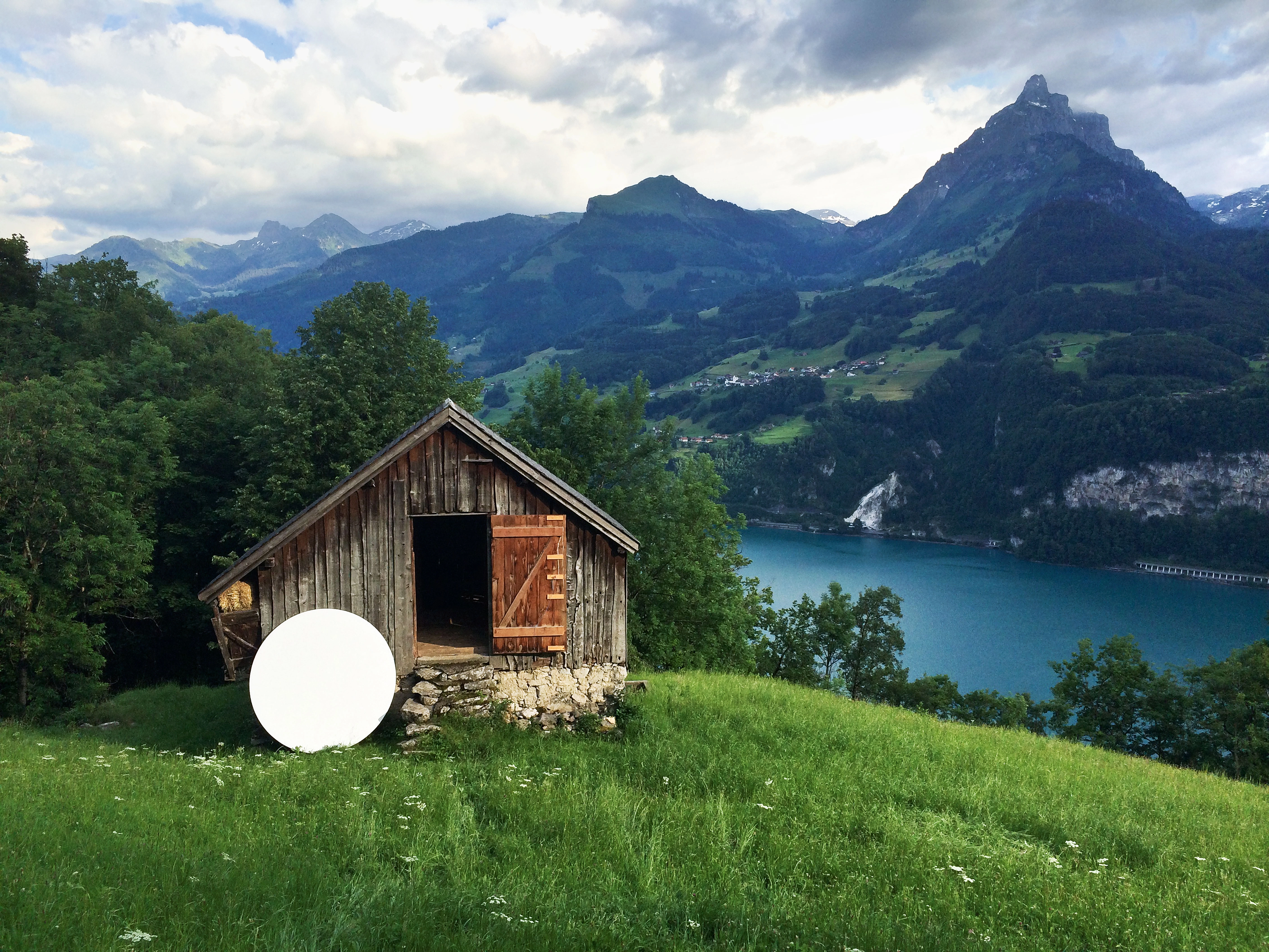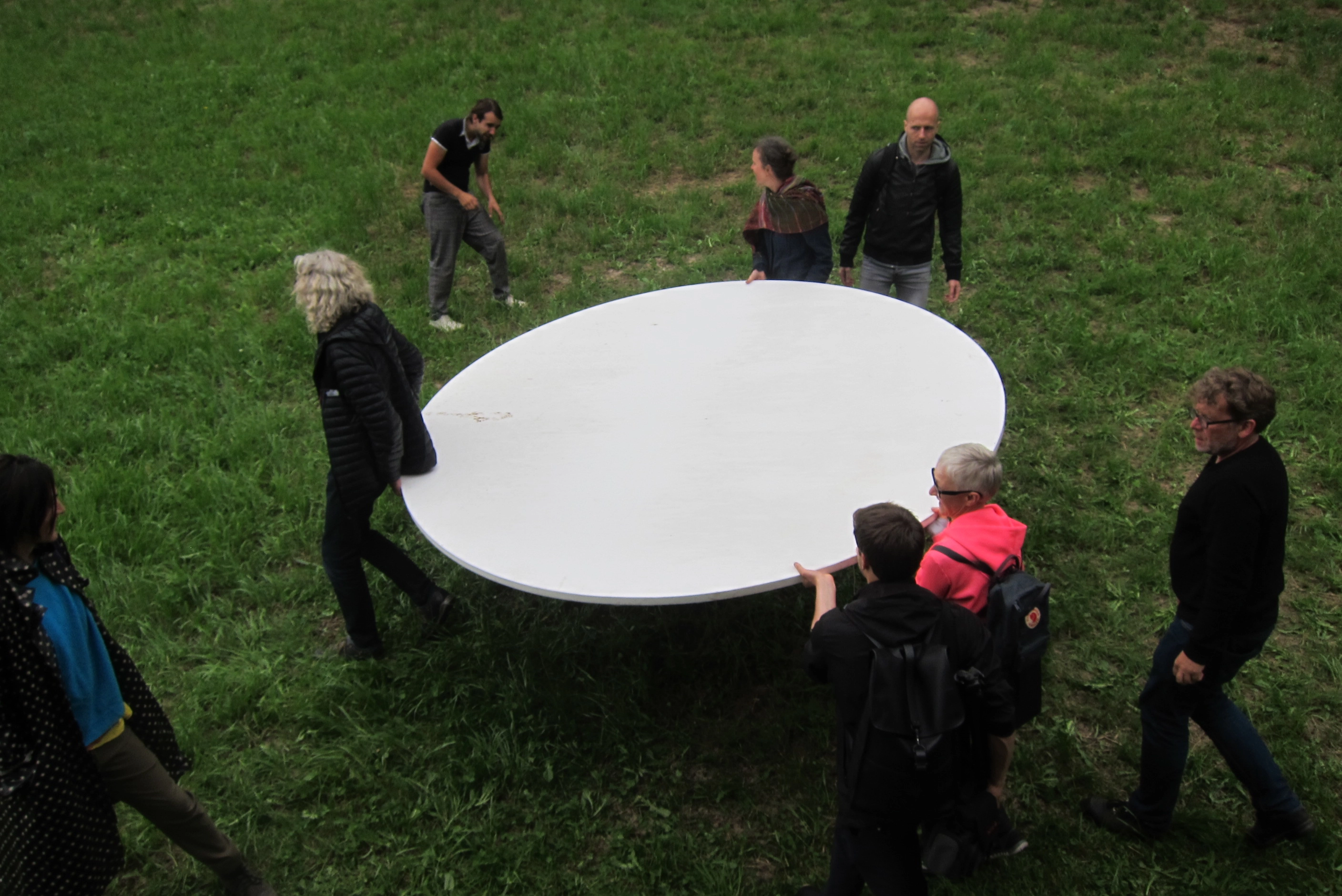The absolute idea of art as a prerequisite for the perception and treatment of a painting as a work of art that was still current in Modernism has now become a memory from times past, or a notion that looms up in the present like a spectre from a different, distant era.
Many works of contemporary art explore the visual process of composition without necessarily aiming at a final work — be it an open-ended work or, following the Italian writer and semiotician Umberto Eco, one that is open to interpretation — but on the contrary start with an open beginning. Eco developed his “Poetics of the Open Work” on informal works of European and US American post-war art. “The open work assumes the task of giving us an image of discontinuity,” the author argues. “It does not narrate it, it is it.” Karin Sander’s works, by contrast, begin with the beginnings, with art’s point of departure, though not in the sense of an ideal — and hence by definition unattainable — state of openness, but rather as a potential approach to art whose aesthetic outcome is wholly unknown. Sander mailed her first white canvases — primed, stretched and unpacked — to an exhibition in Madrid in 2004. Since then, she has shipped numerous canvases all over the world, only the backs of which she covers and uses for the addresses of sender and recipient. Shipping and the predictable but random manipulation that it entails naturally leave their mark on the unpacked canvases. The starting point and destination of the mailed canvases become part of the title. It is through their transport that these paintings become what they are, namely “Mailed Paintings,” as Sander calls them. They are not created in the studio, but are instead the product of what happened to them en route, as seen in the marks left by their use and their handling. According to Sander, each painting is on view everywhere and without interruption in the course of its journey. Each state is temporarily permanent until overwritten the next time the canvas is shipped to another destination. Essentially, this is a process with an open-ended future. Like Adrian Schiess and Bruno Jakob, Sander was quick to devise various means of undermining personal authorship. She shows the process of creating art as an anonymous process over which she has no control or influence, even if she deliberately sets it in motion. The works thus demonstrate the “visual indifference” championed by Marcel Duchamp and his idea of readymade art. At Atelier Amden, Sander exhibited two of her Gebrauchsbildern (“Patina Paintings”), specifically the first tondos in this group of works that was begun prior to the Mailed Paintings and includes paintings not made in the studio. Sander describes the idea behind them as follows: “The Patina Paintings, called Gebrauchsbilder in German [the term implies both that the canvases are consumer objects and that they fulfil a need] are created in the locations where they are hung. The primed image carriers are taken, without prior manipulation, to a selected location and remain exposed there for a period of time to be determined. They absorb and reproduce the specific patina of this location. This process of absorption can continue infinitely or be interrupted at some point. Duration, the name of the location, and size determine the painting and provide its title.” The exhibition in Amden commenced on 15 June 2014, the day that Karin Sander, Dirk Weber, and I installed the two works in the barn. Dirk Weber had the stretchers for the two tondos made in Italy to the artist’s specifications and subsequently mounted the white primed canvases, each 250 cm in diameter, on the stretchers when they arrived in Amden. One tondo was hung on the wall of the second floor. The other was not hung but rather propped against the side wall, so that visitors could move it around in the room or take it outside. Wherever it is placed, it incorporates its surroundings. For this reason, the tondos in the stable each absorb and reflect colours in an entirely different way, one of them suddenly looking green, the other brownish white. The concert Inka Palmi in Louise Guerra took place on 28 September 2014. Just a few minutes before it began, Sander — in the presence of the audience — rolled the propped tondo out of the building and leaned it against the foundation wall next to the steps. Thus, not only can these works be experienced at the moment of their becoming, but they actually carry within them their own genesis and the process that led to their making. Once preserved, as it were, they can therefore be appreciated elsewhere and at another time.
– Roman Kurzmeyer

 Images
Images
 Info
Info--2014--%C2%A9-Karin-Sander--003.webp)
--2014--%C2%A9-David-Aebi--005.webp)
--2014--%C2%A9-David-Aebi--001.webp)
--2014--%C2%A9-David-Aebi--002.webp)
--2014--%C2%A9-David-Aebi--004.webp)


 Next Exhibition
Next Exhibition